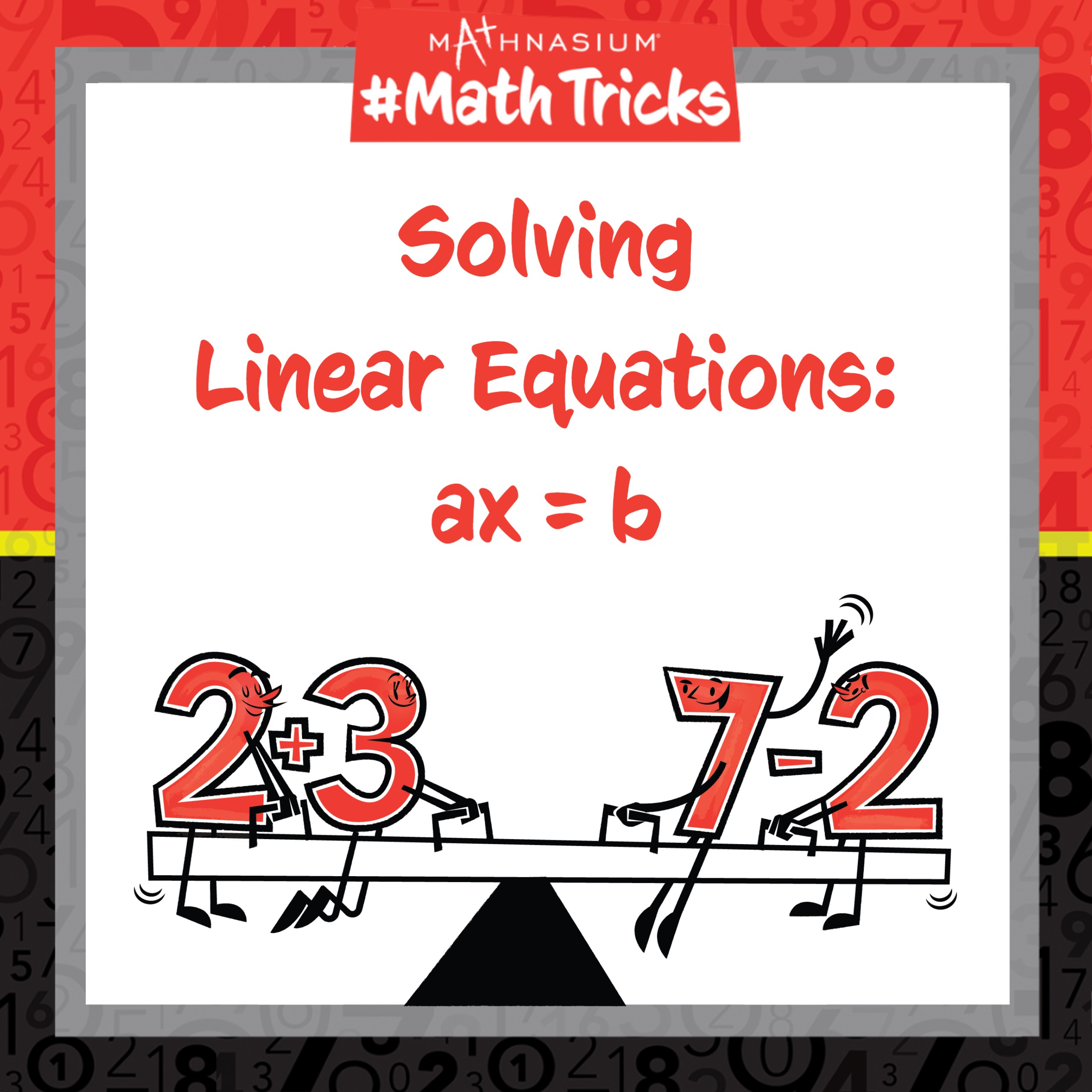Welcome to Mathnasium’s Math Tricks series. Today we are solving linear equations in the form ax = b.
We can sometimes solve “simple” linear equations using inspection, particularly when the answer is an integer.
But for some equations, it may be difficult to solve for x mentally, especially when the answer is a proper fraction or a mixed number. To solve for the variable x in these cases, divide both sides of the equation by the coefficient (the number that is being multiplied by the variable). The Law of Equations tells us that operations done on one side of the equal sign must also be done on the other side of the equal sign to keep the equation in balance.
Follow the examples below to solve for the variable.
Example 1: 13x = 182.
Step 1: Divide both sides of the equation by the coefficient.
13x = 182
13x/13 = 182/13
x = 182/13
x = 14
Step 2: Check your work by plugging in for the value of the variable.
13(14) = ?
13 × 14 = 182
Answer: x = 14.
Example 2: 5a = 12.
Step 1: Divide both sides of the equation by the coefficient.
5a = 12
5a/5 = 12/5
a = 12/5
a = 2 2/5
Step 2: Check your work by plugging in for the value of the variable.
5(2 2/5) = ?
5 × 2 2/5 = 12
Answer: a = 2
2/
5.
Now, with this strategy, you are ready to use this Mathnasium Math Trick to solve linear equations in the form
ax = b. Click
here for more practice problems, then check your answers
here.
If you missed this, or any of our other Math Tricks videos, check them out on our YouTube channel!
Do you have a math trick you want to see? Submit your request at: http://bit.ly/MathnasiumMathTricks.

 877-601-6284
877-601-6284 877-601-6284
877-601-6284
















